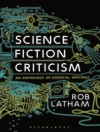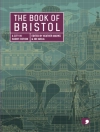Contains 10 illustrations.
In the heart of provincial England, amid the cobblestone streets and rolling countryside of the fictional town of Middlemarch, George Eliot weaves a masterful tapestry of human hopes, ambitions, and foibles. Middlemarch is a sprawling and timeless novel that delves into the lives of its diverse inhabitants, exploring their interconnected destinies and the profound impact of choices made in the pursuit of love, ambition, and social change.
At its core, Middlemarch tells the story of Dorothea Brooke, a young and idealistic woman with a thirst for meaning and purpose in a society where women’s roles are often confined to domesticity. Her marriage to the scholarly yet emotionally distant Edward Casaubon sets the stage for a tale of love, disillusionment, and personal growth.
But Middlemarch is far more than a simple romance. It paints a vivid portrait of a society in flux during the early 19th century, grappling with the winds of political and social change. The novel introduces a rich cast of characters, from the ambitious and opportunistic Tertius Lydgate, a young doctor determined to bring medical reform to Middlemarch, to the charming yet morally flawed Will Ladislaw, whose arrival disrupts the lives of many.
Eliot’s prose is both eloquent and insightful, as she explores complex themes of marriage, politics, religion, and personal identity. Her characters are multifaceted and deeply human, making Middlemarch a timeless exploration of the human condition and the choices we make in our quest for happiness and meaning.
Middlemarch is a literary classic that continues to captivate readers with its rich storytelling and profound examination of society, making it a must-read for anyone who appreciates the depth and complexity of the human experience. George Eliot’s masterpiece remains as relevant today as when it was first penned, reminding us of the enduring power of literature to illuminate the complexities of our own lives.












